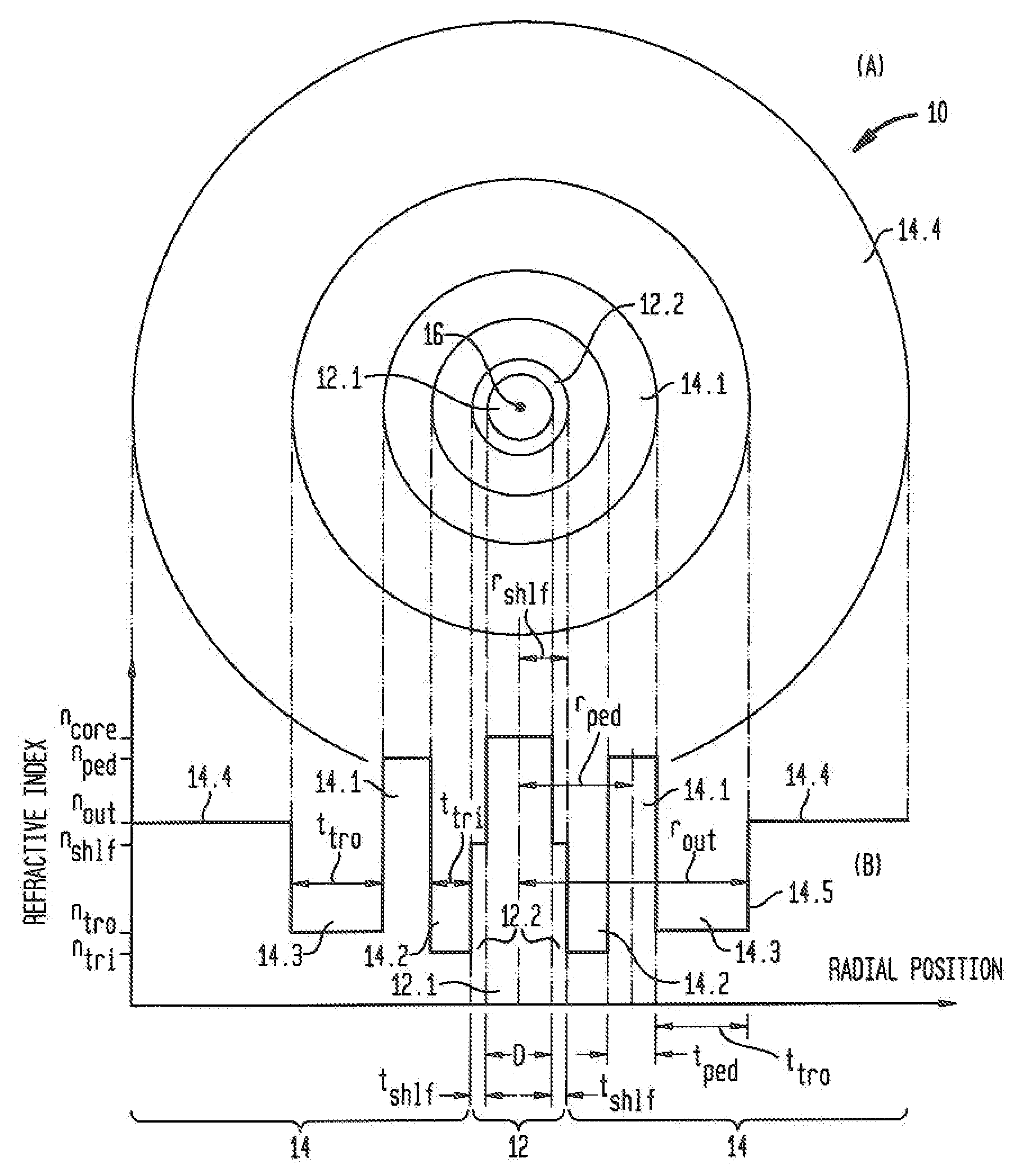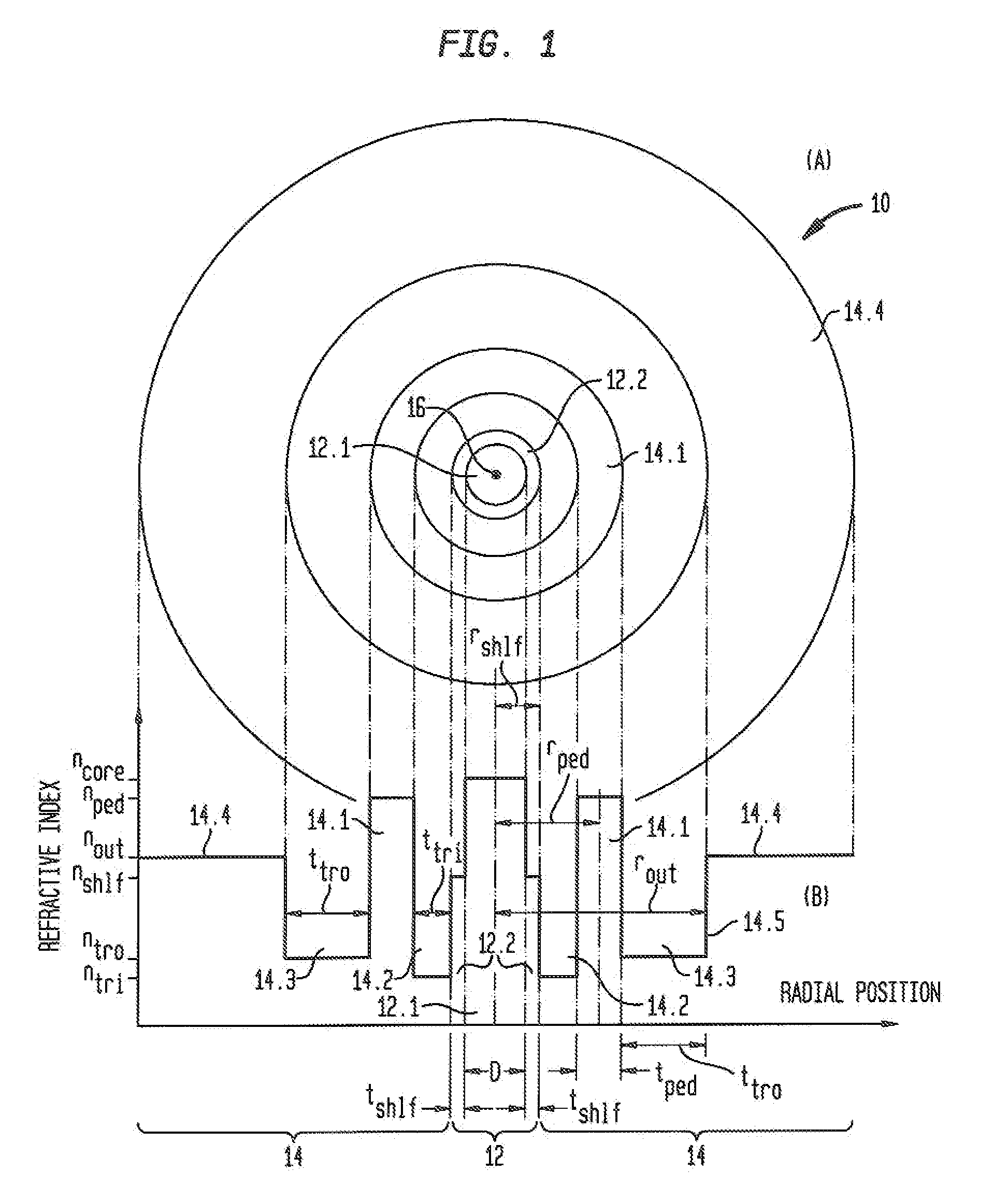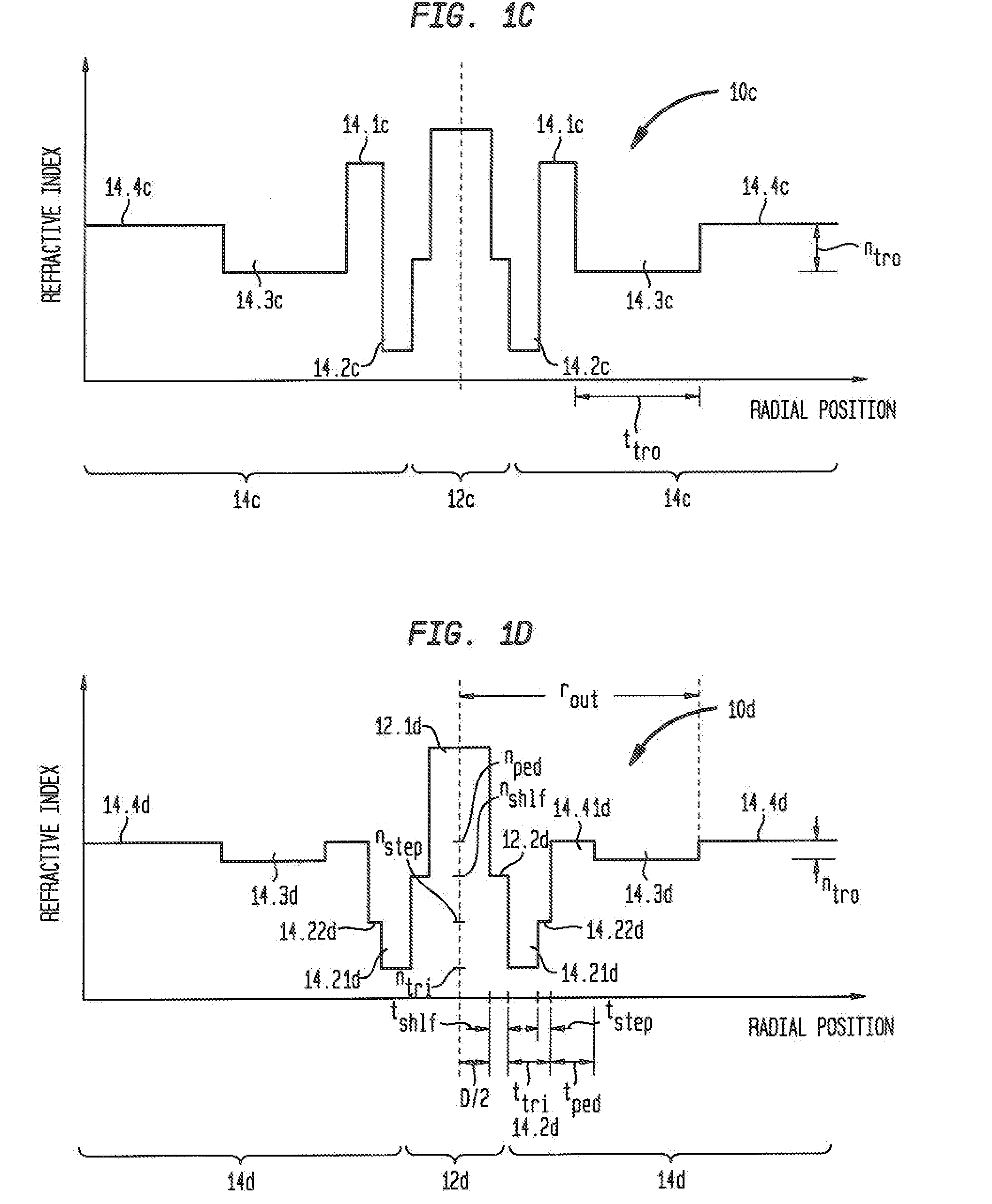Reduced Bend Sensitivity and Catastrophic Bend Loss In Single Mode Optical Fibers and Method of Making Same
a single-mode optical fiber and bending loss technology, applied in the field can solve the problems of reducing the sensitivity of single-mode optical fibers, reducing the insertion loss of total insertion, and sacrificing compatibility properties, etc., so as to reduce the noise in the signal mode, improve system performance, and reduce the total insertion loss
- Summary
- Abstract
- Description
- Claims
- Application Information
AI Technical Summary
Benefits of technology
Problems solved by technology
Method used
Image
Examples
Embodiment Construction
[0057]The design of optical access fibers for typical practical applications involves consideration of three interrelated requirements: (i) relatively low bend loss (i.e., low bend sensitivity) for a bend radius within a predetermined range (e.g., approximately 2-15 mm); (ii) suppression of HOMs (i.e., relatively low cutoff wavelength for the HOM(s) to be suppressed); and (iii) mode-area matching to standard SMF (e.g., good connectorization and / or splicing to standard fiber, such as SMF 28 commercially available from Corning, supra). Below we describe first what we term Type I RAF designs of the type described in our parent application Ser. No. 12 / 072,869 (Fini 9-5), supra. Then, we described Type II RAFs in accordance with the present invention and compare their design and performance to those of Type I RAFs.
Type I RAF Design—Bend Insensitivity Considerations
[0058]With reference now to FIGS. 1A and 1B, an optical fiber 10 in accordance with parent application Ser. No. 12 / 072,869 (F...
PUM
| Property | Measurement | Unit |
|---|---|---|
| diameter | aaaaa | aaaaa |
| diameter | aaaaa | aaaaa |
| refractive index | aaaaa | aaaaa |
Abstract
Description
Claims
Application Information
 Login to View More
Login to View More - R&D
- Intellectual Property
- Life Sciences
- Materials
- Tech Scout
- Unparalleled Data Quality
- Higher Quality Content
- 60% Fewer Hallucinations
Browse by: Latest US Patents, China's latest patents, Technical Efficacy Thesaurus, Application Domain, Technology Topic, Popular Technical Reports.
© 2025 PatSnap. All rights reserved.Legal|Privacy policy|Modern Slavery Act Transparency Statement|Sitemap|About US| Contact US: help@patsnap.com



